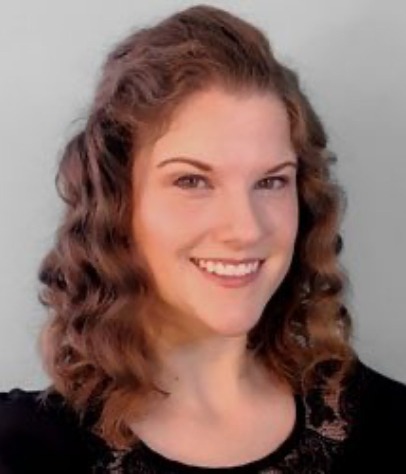Getting ready for an on-camera interview is crucial to appearing confident, clear, and knowledgeable.
Here are some helpful tips to make sure you’re well-prepared.
1. Understand the Audience

Before your on-camera interview, think about who will be watching and tailor your responses to match their interests and expectations. Understanding the nuances of your industry is key to effectively communicating your message. Each industry maintains its own set of standards, requiring you to adjust your tone, language, and examples to align with your company’s norms. To do this, be mindful of your use of jargon. You can use industry-specific terminology if appropriate, but avoid language that might not be universally understood. Aim for clear and concise communication.
Remember, your interviewer is part of your audience, so be prepared to adapt your communication style based on the cues you receive from them during the interview. If they show particular interest in certain aspects, delve deeper into your response. Pay attention to their pace and tone, and mirror their style accordingly. Whether formal or relaxed, adjust your demeanor to match theirs for optimal connection and engagement.
2. Anticipate Common Questions
To succeed in an on-camera interview, it’s essential to anticipate potential questions from your interviewer. Consider common inquiries about your company and what you would ask yourself if you were in their shoes. Practicing some of these questions will make you feel more prepared and confident about your answers. You may even want to prepare some personal anecdotes to dive deeper. These can be a powerful way to make your responses memorable and showcase any achievements.
Here’s a simple way to craft your anecdote
1. Start with a brief introduction to lay out the context
2. Clearly explain the situation, that actions that were taken, and the results
3. Conclude by summarizing they key takeaway or lesson.
3. Craft Key Messages
During preparation, identify key messages you want to convey during the interview. Practicing these clear and concise responses will be more impactful and effective at communicating what you want about your company. These can include your unique selling points and achievements. Think about some themes your personal anecdotes have in common. What do they say about your company? Condense these themes into concise phrases, such as ‘Innovation,’ ‘Collaboration,’ or ‘Adaptability,’ to convey your company’s core values and mission succinctly.
4. Be Concise

Maintaining clarity and conciseness during an on-camera interview is paramount for effectively conveying your ideas and experiences. There are many ways to achieve clarity in your responses. First, you’ll want to organize your thoughts before speaking and use a clear structure in your answer. One example of a structure is the CAR method (Challenge, Action, Result). This skill will help you to provide context and highlight your achievements while also being clear and concise. Once you have a structured answer in mind, start with a strong opening. Clearly stating your main point will grab the audience’s attention. Make sure to avoid rambling and stay on topic, because going off on tangents will make you seem unfocused. Practicing brevity without sacrificing the substance of your response is key. And, while speaking, avoid filler words such as “um,” “uh,” and “like.” Instead, take brief pauses to gather your thoughts. During your interview, you’ll also want to keep an eye on time and adjust the length of your responses accordingly. You want to make sure that your responses have the most relevance to what you want to convey.
5. Practice Out Loud
Practice your responses out loud. This might seem intimidating, but it will help you improve your verbal communication, build confidence, refine your answers. Start by selecting common interview questions and crafting thoughtful, structured responses that highlight your key messages and achievements.
To have structured responses, you can start with a bulleted list to help organize your thoughts and serve as prompts to guide you during practice sessions. Next, find a quiet, distraction-free space to rehearse, where you can practice without distractions. Consider practicing in front of a mirror to observe your body language and facial expressions, or record yourself to evaluate tone and inflection. Strive for a confident and professional tone of voice, speaking at a moderate pace to maintain clarity and composure. Avoid speaking too quickly, which can make you sound nervous or anxious. By following these steps, you’ll be better prepared to ace your next interview.
6. Consider Non-Verbal Communication
Attentiveness to body language plays a crucial role in any interview setting, particularly during on-camera interactions where non-verbal cues are magnified. Maintaining eye contact with your interviewer, rather than the camera, fosters a sense of connection and engagement. Posture also speaks volumes; sitting up straight conveys professionalism and interest, while avoiding crossed arms avoids appearing defensive. Sit up straight as slouching can convey disinterest and lack of professionalism. And, when speaking, use open and relaxed gestures to emphasize points. Avoid crossing your arms, as it can be interpreted as defensive or closed off. A good tip to keep in mind is mirroring your interviewer’s body language to create a connection. Aligning your posture can foster a sense of rapport. This can also show that you’re engaged in the conversation and demonstrating active listening. To further enhance this, you can use other non-verbal cues such as nodding occasionally and leaning slightly forward to signal engagement. All of these non-verbal elements are important to consider but, above all, be genuine and authentic. Let your body language reflect your genuine self to shine because authenticity contributes to a positive and lasting impression.
7. Dress Professionally
Selecting the right attire is essential for making a positive impression during your interview, aligning with both the industry standards and the interview’s context. Some industries may have a more formal dress code, while others are more casual. It’s also important to avoid distracting patterns or colors that might not look good on camera. Neutral colors such as navy, gray, or black are generally safe options. And, when getting ready, ensure you have good lighting to showcase your outfit accurately. You won’t want any harsh lighting to distort the color of your clothing. It’s also helpful to be mindful of your background for the interview. You’ll want to choose your outfit accordingly so it doesn’t clash with that background. Lastly, avoid noisy accessories because they may distract or interfere with the microphone. Instead, opt for subtle and professional accessories if desired.
Remember, while preparation is key, authenticity and adaptability are equally important. Approach the interview with enthusiasm, active listening, and readiness for dynamic engagement with the interviewer.

About the Author
Alyssa Salkin | Intern
Since a young age I have always been a creator. Whether it was a painting, sketch, short story, or film, I was always making content unique to my personality. I eventually gravitated towards a deep passion for storytelling, which led me to dual major in English and Film at Towson University. Throughout my academic career I have participated in the roles of writer, director, producer, and cinematographer. I strive to apply this experience to larger scale productions and inspire others to create.













